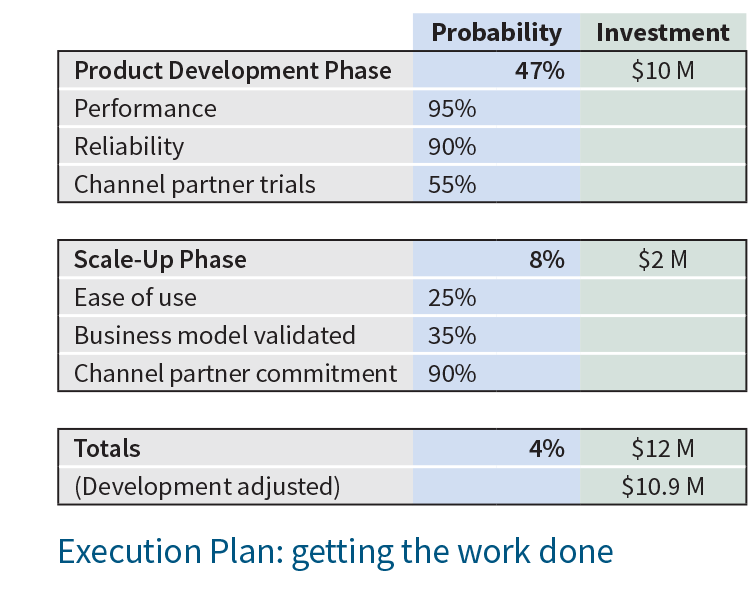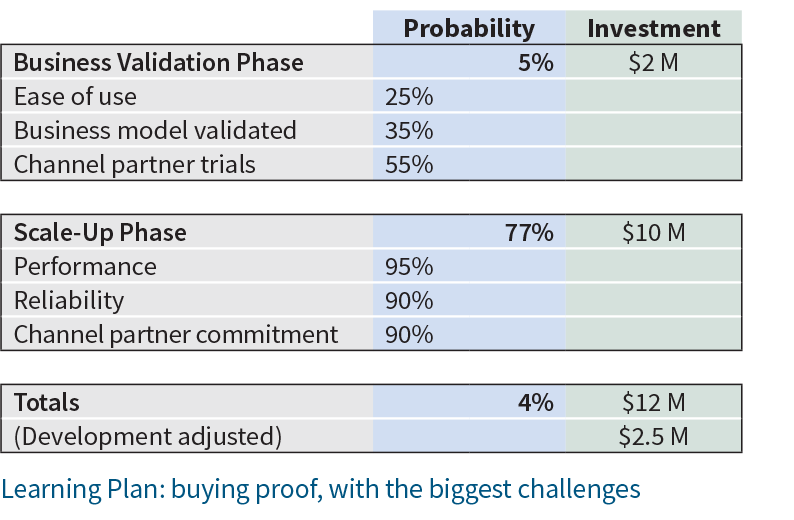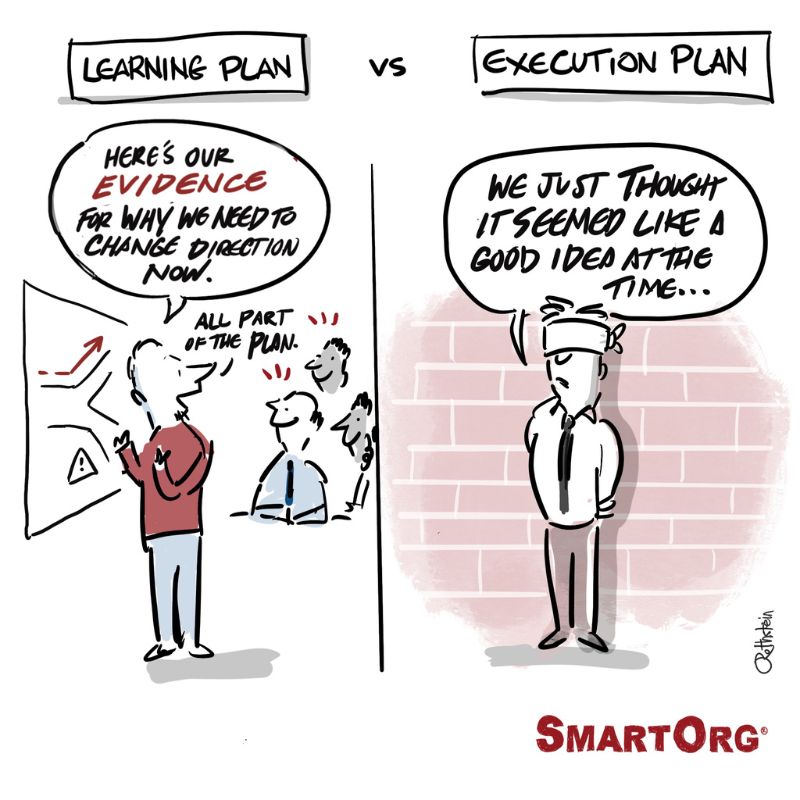Failing Forward Quickly with a Learning Plan
By David Matheson  4 min read
4 min read
[Updated 04-09-24] Breakthrough innovation takes an organization out of its familiar comfort zone into a realm of uncertainty. Unlike incremental innovations into existing product domains and markets where the behavior of technology and customers is well understood, breakthrough innovations entail using new technologies, selling to new kinds of customers, entering new markets, or all three at once. During the incubation phase for each such project, questions will arise about whether and how the project can proceed successfully – and a negative answer could spell its end. When pursuing projects like these, it is imperative to pursue the answers to those questions in the correct order to avoid putting time and money into a doomed project.
The Learning Plan consists of a series of experiments to undertake and proof points to achieve during the incubation phase of the project. Each proof point is something that must be true for the project to meet its objectives. These experiments and proof points are placed in a time sequence that address the most significant sources of risk first; doing so lets you de-risk the project as cheaply as possible by finding out early on which hurdles you can and can’t overcome. The Learning Plan also establishes pivot meetings, at which time decisions are made to punt, pivot, or persevere based upon the evidence you have gathered through experimentation. Failure to satisfy a proof point may lead to canceling the project to avoid further costs, while uncovering significant upside potential might result in a changing course to pursue the new opportunity. These pivot meetings create options for the project during incubation that you can exercise at each step to achieve the best outcome available.



A Learning Plan helps to quell internal panic that is sometimes induced by innovation. Innovators often act like either trailblazers or undercover operatives. The trailblazers tell the organization: “Trust us and fund us, and we’ll deliver a breakthrough innovation.” The undercover operatives don’t tell the organization anything, hoping to fly under the radar and complete their work before fearful managers realize what they’re doing and put a stop to it. With a Learning Plan, innovators can present the organization with a concise proposal that shows efficient use of funding and realistic expectations. This more balanced, transparent approach helps the innovators calm the panic and gain the commitment of the organization to fund the proposed work and let them carry it out to completion.
Want to reduce risk? See how a Learning Plan provides a road map for incubation in SmartOrg’s Innovation Navigator®.